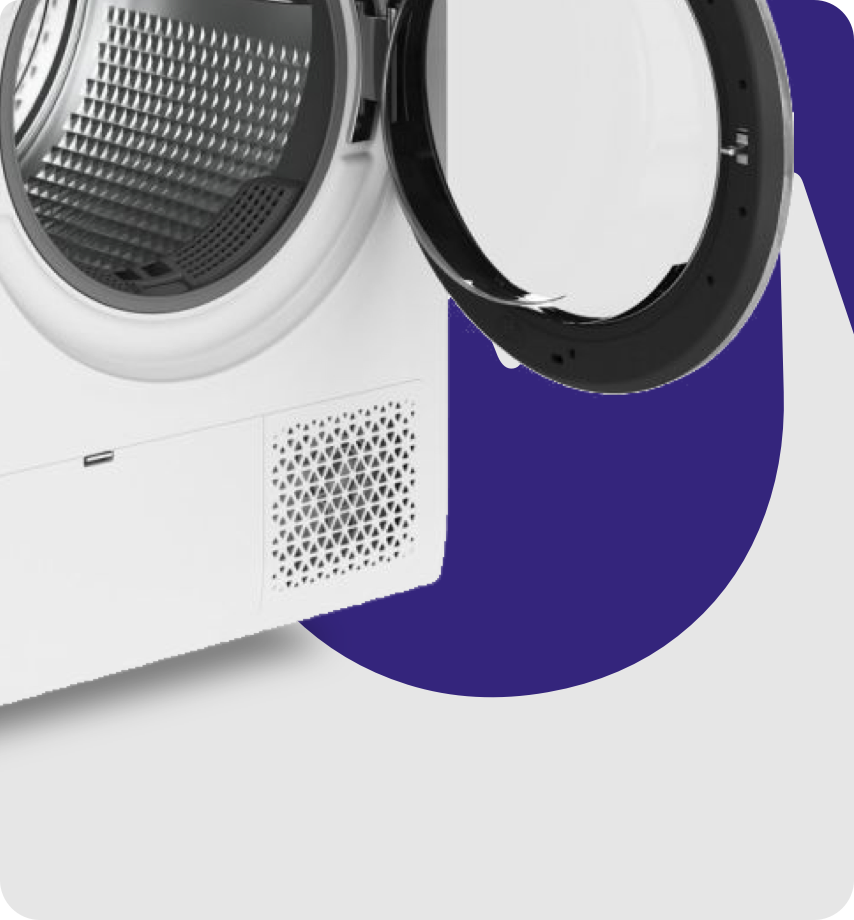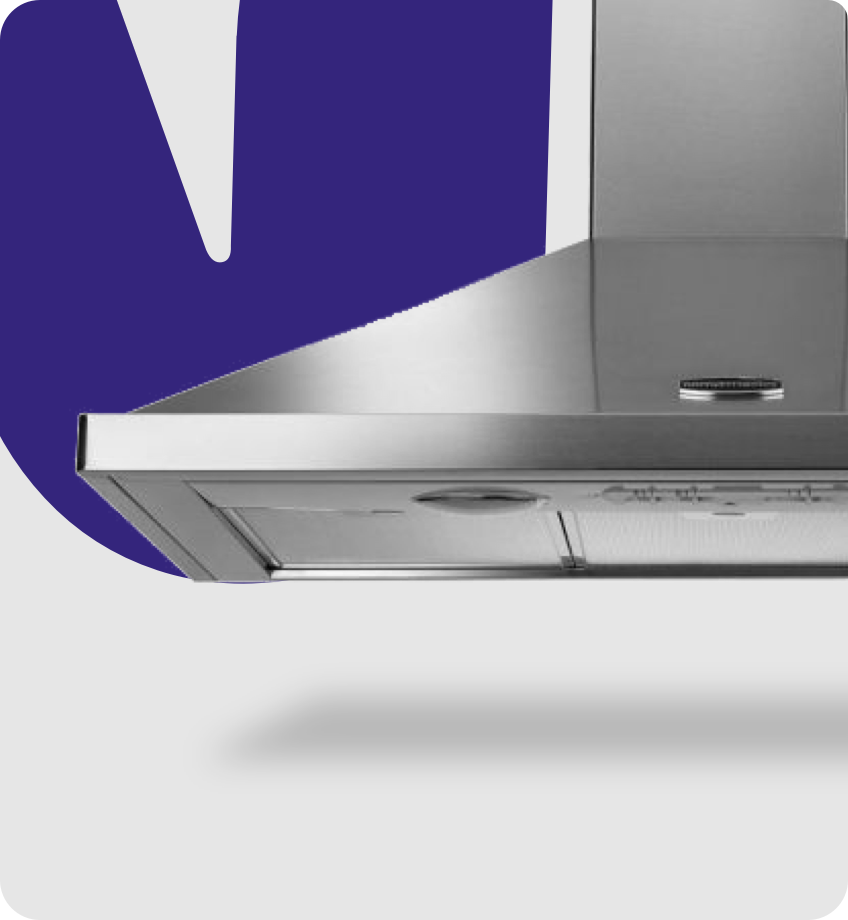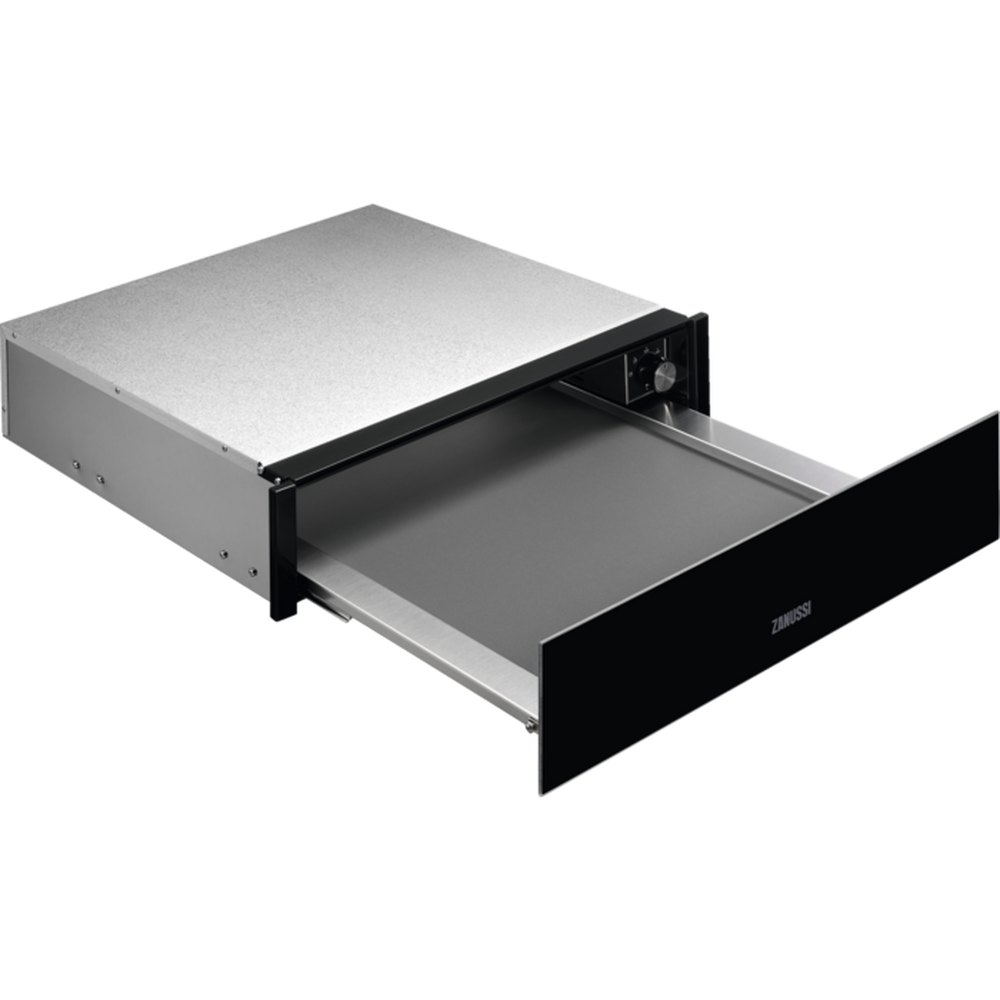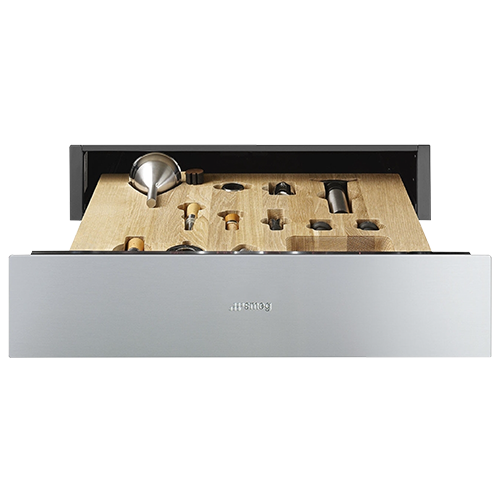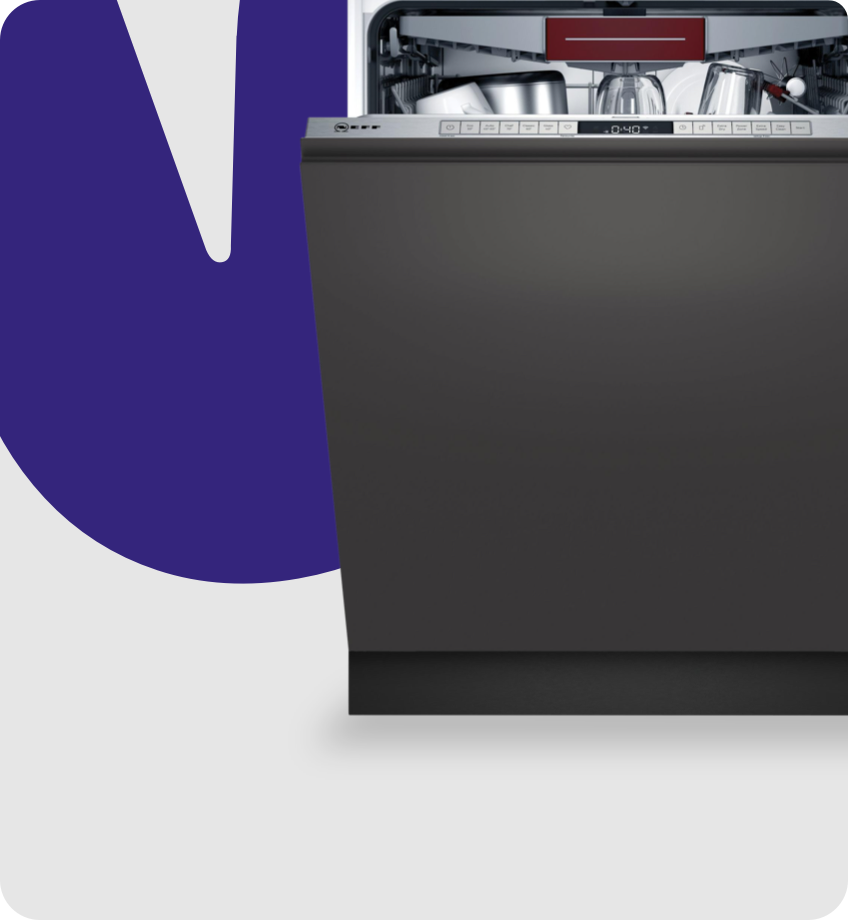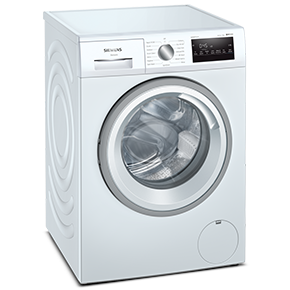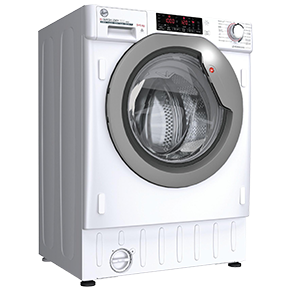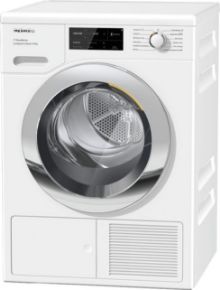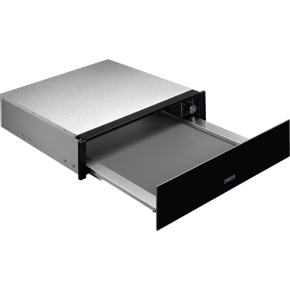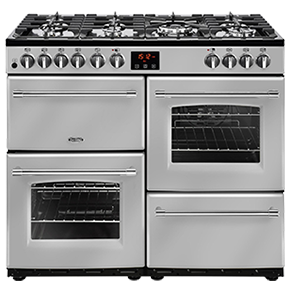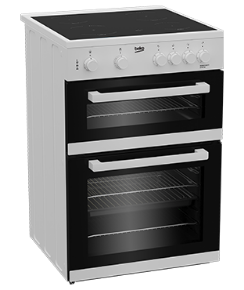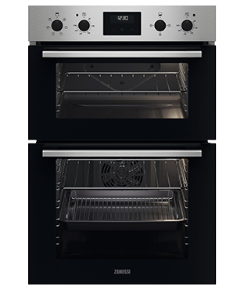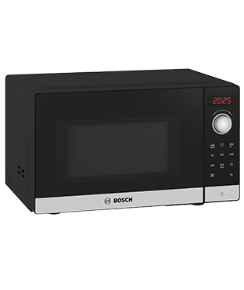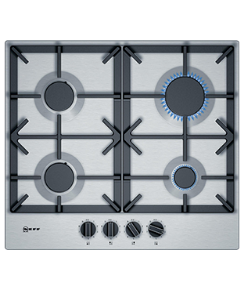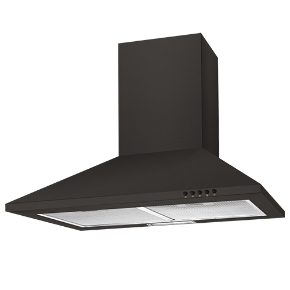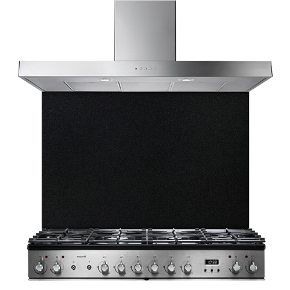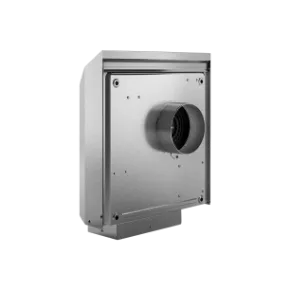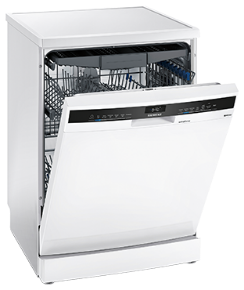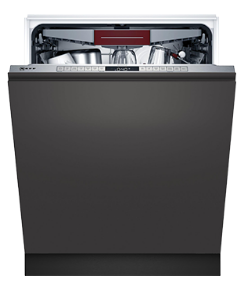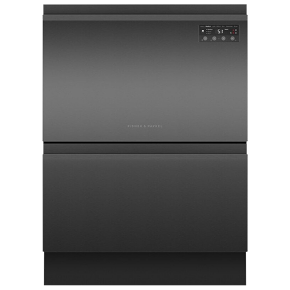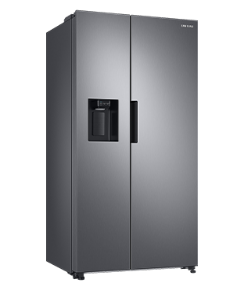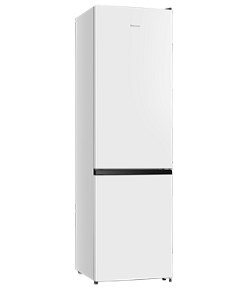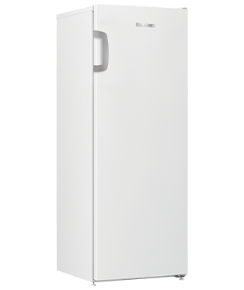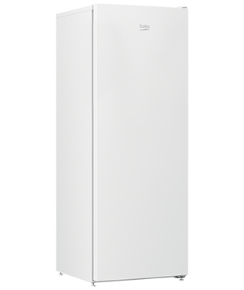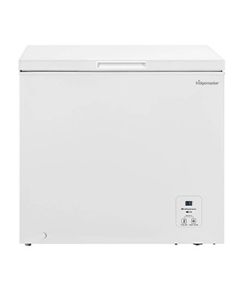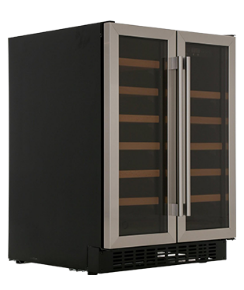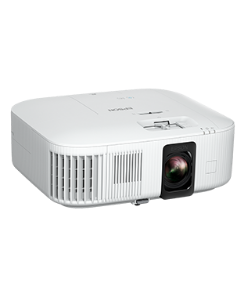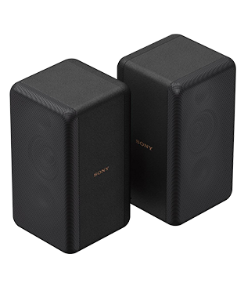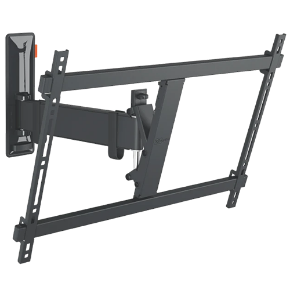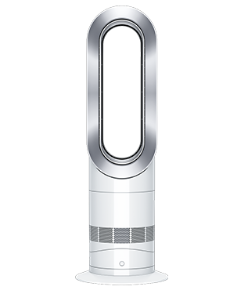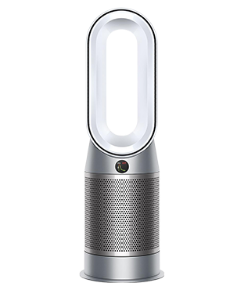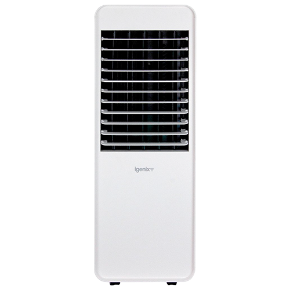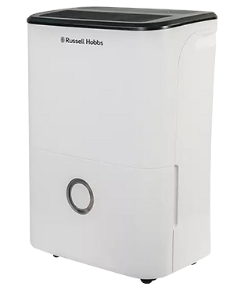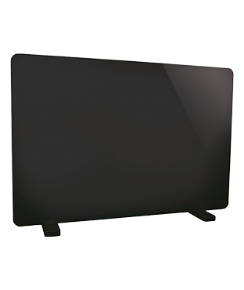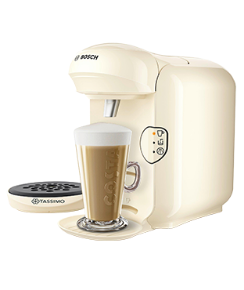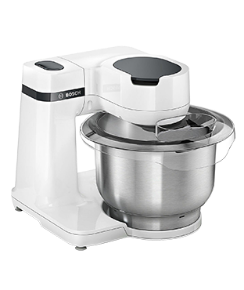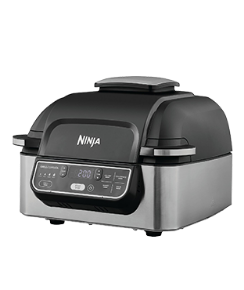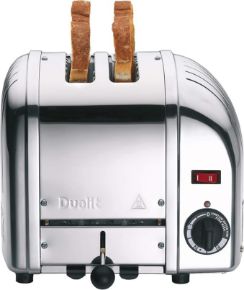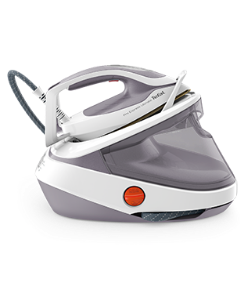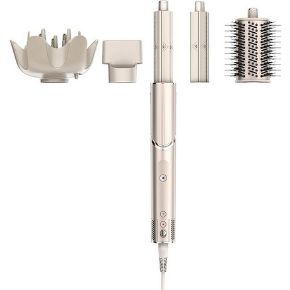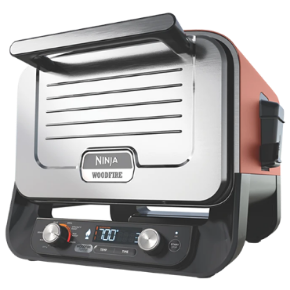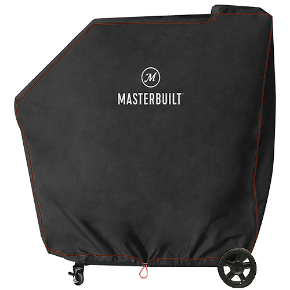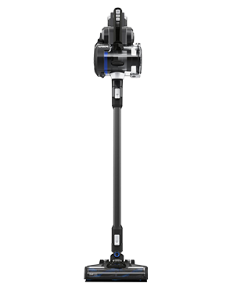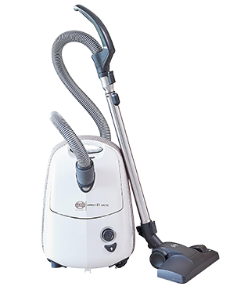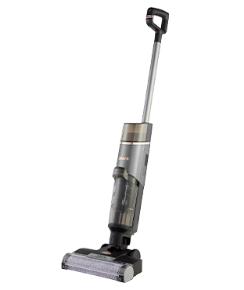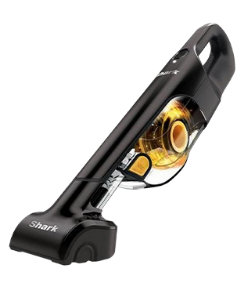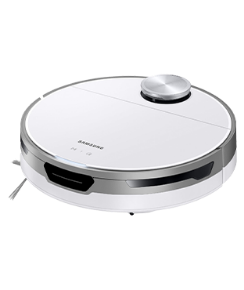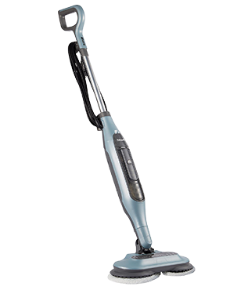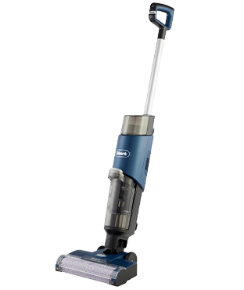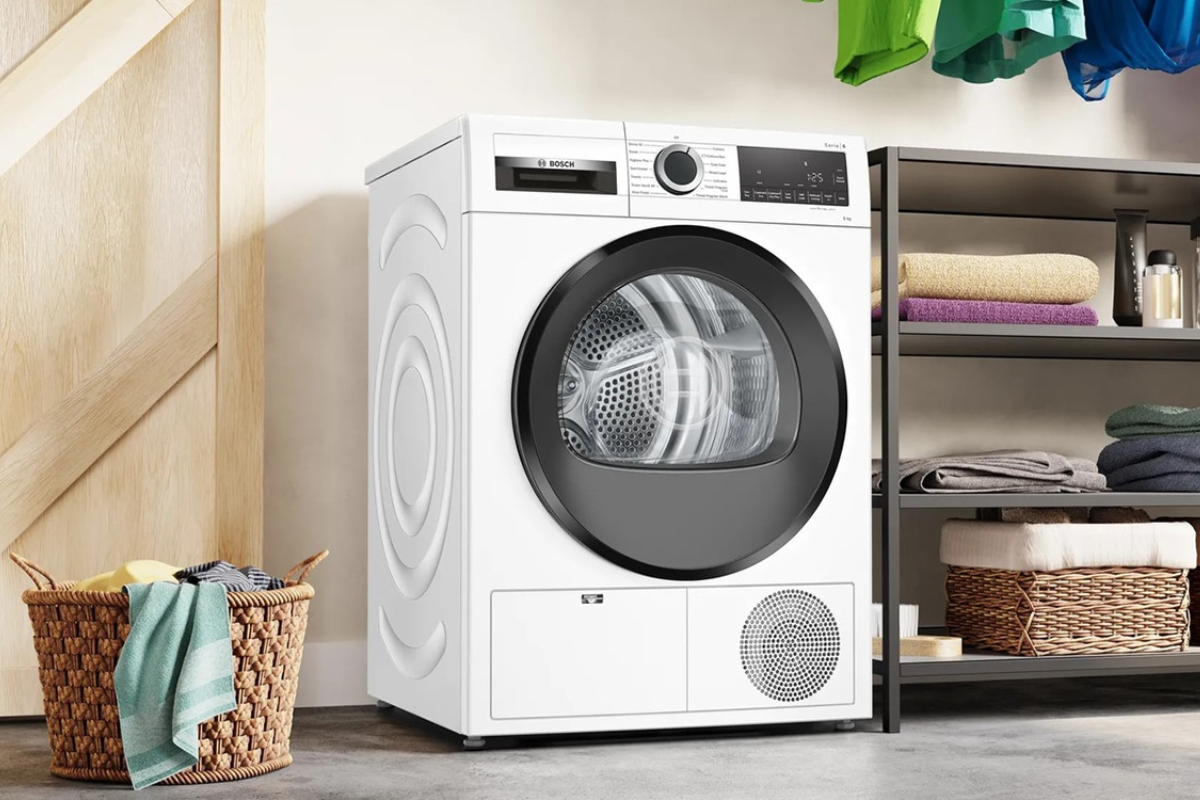Do you have a temperamental tumble dryer? We have collated some of the most widespread problems associated with tumble dryers, so you can resolve the issue yourself or call out a repairman if necessary. If you do need to replace your tumble dryer we have a wide range available online.
It is important to note that the location of parts will differ depending on the make and model of the appliance. Therefore, you should consult your manual alongside our recommendations.
If you need to replace any aspect of your machine, you must unplug the appliance from the mains. If in doubt, call a professional repairman.
Why is my tumble dryer not heating up?
Before you do anything, please ensure your appliance is unplugged from the mains.
The location of individual pieces of equipment will vary from model to model. If you are struggling to find these locations, you may want to ask a professional to do this on your behalf.
Heater tripping
If your tumble dryer isn’t heating, a common cause is that the heater itself has tripped and needs resetting. Thankfully, this is a particularly easy task:
The reset button is usually positioned at the back of the appliance. All you have to do is push the button. An audible click will confirm that this was, in fact, the problem. Some tumble dryers also have a thermostat in the same location, with a similar reset button should it be needed.
You should regularly clean your door filters and the drum to allow the air to regulate. These filters being blocked can cause the heater to trip. Additionally, fluff can also clog the condenser box, located at the bottom of the appliance. Simply pull this out and run it under a tap to remove any lint of fluff.
Failed heating element
If you have reset the heating button and cleared out the filters yet your tumble dryer is still not heating, you may need to replace the heating element entirely. The location of the element will vary depending on the make and model. These instructions are for elements at the back of the machine.
After you have disconnected the appliance, remove the back, side and top panel to reveal the heater assembly. This should be secured with screws, making it easy to remove. After locating the heating element, simply swap out the old heating element with the new, securing it to the cables, clipping it in place and screwing it in before replacing the rear panel.
Debris filling your exhaust vent
This problem is only relevant to vented machines.
Not only will a full exhaust vent stop your tumble dryer from heating, but it is also a massive fire hazard; therefore, you should clean your vent regularly.
After disconnecting your tumble dryer, locate the start and endpoints of your duct. Remove any clamps or metal tape that is securing the vent in place and gently pull it away from the wall duct. Next, remove the duct cover or flap securing the vent to the exit point of your home.
If your tumble dryer runs on natural gas, you need to be extremely careful not to disturb the gas line. It may be worthwhile calling a professional to clean your vent to be on the safe side.
Using a dryer vent cleaning kit, you can easily remove lodged debris from the vent. It may be easier to do this from the exit point, using gravity as an aid. Cleaning up any dust and debris from your laundry floor with a dustpan and brush may be a more straightforward task than cleaning it up from outside.
Spin your cleaning rod counterclockwise, so you don’t accidentally unscrew any segments.
Finally, reconnect everything, and your appliance should resume standard working order.
Thermostat issues
A tripping thermostat is one of the most common faults associated with tumble dryers. Thankfully, fixing the issue is relatively simple and, in some cases, can be done alongside resetting the heating button as explained above.
Firstly, you will want to ensure that it is, in fact, the thermostat that is causing your tumble dryer to stop heating. This can be accomplished with a multimeter. Simply rotate the dial to the lowest ohms of resistance setting and calibrate the probes. Once satisfied, place a probe on each side of the removed or isolated thermostat terminal to gain a continuity reading. If the number reads as zero, or close, then your thermostat is working as it should.
If the needle on the metre does not move at all, or the digital display does not change; this means that there is no continuity within the thermostat and it needs to be replaced.
To check the continuity and replace the thermostat should you need to, you must first locate the thermostat on your particular tumble dryer; which may be highlighted in your manual. The following instructions relate to replacing a thermostat that is located at the front of the appliance.
Firstly, you should unscrew and remove the upper lid of the tumble dryer. Then, remove the control panel's plastic bracket by inserting a flathead screwdriver in the opening of the bracket, and squeezing the sides together to pop it off. After this, you should unscrew the fascia panel to reveal the thermostat.
Once you have located your thermostat, you should be able to unscrew and remove it. Detach the electrical connectors. You should then remove the gasket from the back of the thermostat and attach it to the new one. Simply screw your new thermostat in the same position as the old one and reconnect the wires and electrical connectors.
You can then work backwards to put the appliance back together.
Why is my tumble dryer not spinning?
Before you attempt to take your appliance apart, please ensure it is safely unplugged.
As makes and models differ, the location of individual pieces of equipment mentioned in this piece may be different in your machine. If you are struggling to locate these, you may want to consider getting in touch with a professional to fix your machine for you.
If your tumble dryer stops spinning, you may have to resort to hanging your clothes around the house to dry. It may feel daunting when the main component of an appliance stops working; however, there is a chance you can fix the problem yourself.
There are three leading reasons why a tumble dryer may stop spinning:
A broken dryer belt
A tumble dryer’s belt can break through general wear and tear, particularly for older appliances. You can easily find out if this is the reason your machine is no longer spinning by rotating the drum manually. If it turns with no resistance, then chances are your tumble dryer belt has either stretched, become loose or snapped off entirely.
How to change a condenser tumble dryer belt
- Take off the tumble dryer lid
- Remove the side panel
- Extract the belt from the drum
- Take off the other side panel
- Release the water container housing by disconnecting the hoses and screws
- Disconnect the wires from the mains filter, making a note of what goes where, and remove the top bracket screws
- Disconnect the top bracket and release some of the screws at the rear panel
- Move the front panel away from the drum, leaving enough space to position the new belt over the front of the drum
- Lift the drum into position making use of the belt. If the front panel is not going back into place, reposition the ducting located behind the lower front panels
- Reconnect the electrical connectors on the mains filter and reattach the upper bracket
- Reattach the water container housing
- Replace the side panel
- Remove the condenser fan cover and fan
- Place the bottom of the belt under the motor spindle
- Wrap the belt over the tension pulley
- Go through the motions of reassembling your appliance
Faulty motor capacitor
If you have manually rotated the drum and not found a problem with the tumble dryer belt, the problem may lie with the motor or capacitor. Your appliance emitting a buzzing sound is a sign that the capacitor needs to be replaced.
Another test involves monitoring the machine. If it seems more sluggish than usual to start or is not starting at all, the capacitor will need to be swapped out with a new one.
How to change the motor capacitor on a condenser dryer
- Remove the top and side panel
- Locate the motor capacitor
- Detach the spade connectors and remove the old capacitor
- Replace with the new capacitor and reconnect the spade connectors
- Put the tumble dryer back together
Seized drum
If you are encountering more resistance than usual when manually rotating the drum, this may be a sign that the rear drum bearing is worn, and the drum support shaft has been cut off due to wear on the back panel. Another potential reason the drum may be seizing may be because the pulley has worn out, resulting in the belt coming off or jamming.
These two tasks are a more difficult problem to solve than the others mentioned in this post. However, it is a problem that is possible for anyone to fix.
How to fit a new drum shaft
You will need to fit a new drum shaft if the drum is moving around when you move it manually and there is a loud noise when the tumble dryer is running.
- Remove the door from the appliance
- Lay the dryer down onto its front
- Remove the air vent (if appropriate)
- Unscrew the right-side and top panel (you may need to unscrew and remove the air vent and tube, bearing cover, heater and fan on the back of the tumble dryer)
- Disconnect wires, making a note of where they all go
- Take off the shaft pin, collar and bearing that holds the back panel in place and remove the rear panel. If required, unscrew part of the left-side panel so that you can safely remove the back panel)
- Carefully remove the belt, which will allow you to take out the drum
- Unscrew the old shaft and replace
- Secure the bearing
- Secure the washer back over the shaft and put the collar back in place, securing it with the pin before replacing the back panel
- Reassemble the tumble dryer
How to fit a new tension pulley on a condenser tumble dryer
If your machine makes a squealing noise during operation, the tension pulley will be the cause of the issue, which will need replacing.
- Remove the top cover of the tumble dryer
- Take off the side panel
- The tension pulley will be at the bottom of the machine, with the dryer belt wrapped around it in addition to being wrapped around the motor spindle
- Remove both the condenser fan cover and the fan (you may need to move wiring out of the way)
- Rotate the belt down and to the side until it comes away from the tension pulley
- Take off the bolts that are holding the pulley in place and remove
- Hook the new pulley onto the motor assembly and screw into place
- Reattach the belt, pulling it down as you slide it in place
- Reassemble the tumble dryer
Why is my tumble dryer leaking water?
Remember to always disconnect the tumble dryer before carrying out any of these maintenance or repair tasks.
Discovering that your tumble dryer has leaked water all over the floor can be extremely frustrating. The resolution, however, will depend on the type of tumble dryer you own.
Water leaking on a heat pump or condenser tumble dryer
Thankfully it may be as easy a fix as modifying the feet on the appliance. Simply adjust the tumble dryer so that the front feet are slightly higher than the rear; this will encourage water to run back to the tank where it can be collected.
Water leaking from a tumble dryer with an internal condenser
If your tumble dryer houses an internal condenser, it may be leaking. You can check this by removing the condenser and running it under a tap. If water is coming out of anywhere other than the nozzle towards the back, then this confirms a leak. Firstly, we recommend cleaning the condenser as thoroughly as possible to see if this resolves the issue. If it doesn’t, it may need replacing.
Water leaking from the water reservoir / external condensation drainage
Alternatively, if your machine's water reservoir or external condensation drainage is located at the bottom of your machine, you may need to drain the water by attaching a hose to the nozzle (ensuring the hose remains on the ground).
If, on the other hand, your tumble dryer has an external water reservoir or condensation drainage at the top of the model, you should check the hose for kinks and ensure that it is hanging directly into the drain.
Maintenance advice to prevent water leakage from your tumble dryer
You should take the time to regularly clean the filters and condenser on our machine, referring to your manual when needed. Lint, fluff and more from your clothes may be a contributing factor to your machine leaking, so this troubleshooting task could save you a lot of time and energy.
At the same time as cleaning the filters and condenser, check that the machine door seals and access flaps are lint-free as well.
Why is my tumble dryer making a noise?
Remember that safety should always come first and foremost. Before you do anything regarding your tumble dryer, make sure it is disconnected from the mains.
While we will do our best to guide you to resolve the problem with your tumble dryer, makes and models do vary. Therefore, if you are struggling with locating specific pieces of equipment mentioned in this post, you may want to get in touch with a professional to resolve the issue on your behalf.
There may be multiple reasons why your tumble dryer is making noise during a cycle. By analysing the type of sound being emitted, you may be able to discover the source of the problem and implement a fix.
Your tumble dryer is vibrating or making a loud droning sound
If you are experiencing this issue yet your appliance is operating as expected, the cause may be a distorted or off-balance drum fan. This will only be the case for condenser tumble dryers, and you will need to replace the fan to resolve the issue.
Alternatively, if the drum is not rotating in addition to the loud humming noise, this may be due to a seized drum. To test this, manually rotate the drum. If it moves as expected, then the problem lies in a faulty motor or capacitor; which will need to be replaced.
How to replace the drum fan on your condenser tumble dryer
- Take the top and right-side panel of the tumble dryer off
- Remove the fan cover and front ring
- Take out the old fan and locking clip and replace with a new model
- Reassemble your appliance
How to replace your condenser dryer’s motor capacitor
- Firstly, take off the top and side panel
- Locate the motor capacitor
- Disconnect the connectors, remove the old capacitor from its housing
- Replace with the new capacitor and attach the connectors
- Reassemble the tumble dryer
Your tumble dryer is squeaking as the drum rotate
The cause of a squeaking noise every few seconds as the machine runs may be the drum pivot bearing wearing out. Black dust collecting on the bearing will confirm whether this is, in fact, the case.
How to replace the drum bearing on a vented dryer
The bearing is attached to the back panel of the drum shaft.
- Firstly, remove the door from the appliance to protect it
- Lie the tumble dryer face-down
- Remove the top and side panel
- Next, remove the air vent and tube, heater, fan and bearing cover located on the back of the appliance (you will have to disconnect the wires from the heater)
- Disconnect wiring, making a note of what is attached to where
- Remove the pin, collar and bearing attached to the shaft
- You can now remove and replace the bearing
- Reassemble your appliance
If you also need to replace the bearing pads, you should follow the instructions above to point seven, where you can then remove the back panel entirely. You may need to loosen the left panel to do this. You can then locate and replace the bearing pads.
Your tumble dryer is constantly squealing
If this type of noise is happening whenever the drum rotates, your belt tension pulley may be wearing out. The more worn this becomes, the worse the sound will be. Additionally, a worn tension pulley may damage the belt; resulting in one more thing to fix.
How to replace your tumble dryer tension pulley
- Firstly, take the top off your appliance
- Remove the side panel
- The tension pulley should be located at the bottom of the tumble dryer (although this may vary from machine to machine). The belt and motor spindle will be wrapped around it
- To get to the pulley, remove the condenser fan cover as well as the fan (be sure to move any wiring safely out of the way)
- To untwine the belt from the pulley, pull the belt down while moving it off the pulley
- Remove the bolts holding the pulley in place, take the pulley off and replace with the new one
- Reattach the tumble dryer belt with the same action as removing it
- Reassemble the machine
There is a rumbling sound when the drum rotates
If you hear a rumbling sound when your appliance is operating, you may need to replace your support wheels. Over time, these wheels can become misshapen. You can test whether you need a replacement by rotating the drum slowly by hand. If you can feel a bump regularly, then the noise is due to the support wheels.
How to replace the support wheels on your appliance
- Unscrew and take off the top of your tumble dryer
- Take off the side panels
- Remove the plastic heater cover first, and then the metal heater cover located at the back of the appliance (on some models there may be a seal holding the cover in place, which will need to be removed)
- Take off the heater, disconnecting electrical connections before unscrewing and removing the entire heater assembly
- Next, remove the fan cover and the fan
- Undo the motor’s electrical connection and take off the spring attached to the motor, which will then slacken the belt as you turn the motor
- Remove the belt from both the shaft and the pulley
- Disconnect any electrical connectors and remove the back panel and drum entirely from the tumble dryer, lying it on the floor
- The drum support wheels should now be visible
- Unscrew and ease the support wheels off
- Remove the support pillar and connect it to the new support wheel
- Reattach to the appliance
- You can then work backwards to reassemble your tumble dryer
Why won’t my tumble dryer switch on?
Please ensure your tumble dryer is disconnected before attempting any fixes to ensure safety at all times.
Tumble dryer makes and models vary, therefore, if you are struggling with locating any of the specific pieces of equipment, it may be worth consulting a professional.
There are a myriad of reasons why your tumble dryer isn’t switching on. Some of these causes are a relatively easy fix, whereas others may be a little more tricky.
Broken tumble dryer timer
If your tumble dryer has a dial timer, this could prevent your motor from working when broken; which in turn stops the machine from starting altogether.
On more advanced models, there could simply be an error message displaying instead of a timer. You can use your manual to gauge a better idea of the problem.
Unfortunately, both situations require a professional repairman to resolve.
Blown thermal fuse
The thermal fuse prevents the tumble dryer from overheating. There may be one or several fuses depending on the make and model of the appliance.
An additional warning sign that your thermal fuse has blown will be your appliance staying hot long after the cycle has ended. If you have noticed this in the runup to your current problem, the thermal fuse has probably blown.
It is also worth investigating what caused the thermal fuse to blow so that you can make a plan to stop the same thing happening again.
You can test whether the thermal fuse has blown with the use of a multimeter.
How to test your thermal fuse
- Set the metre to the continuity or lowest ohm setting (if using the ohm setting, touch the probes to each other for a baseline reading)
- Place the multimeter probes on opposite sides of the fuse wire terminals
- If you hear a beeping noise or achieve a low ohm reading that is close to your baseline, the fuse is working
- If there is no beeping noise, or the ohm reading is high or doesn’t change at all, the fuse has blown
How to replace a blown thermal fuse
- Remove the back panel
- Locate the thermal fuse, disconnect the wires and unscrew the mounting screw before detaching the thermal fuse
- Replace with a new fuse and secure
- Reassemble your tumble dryer
Faulty start switch
If your tumble dryer usually begins its cycle at the push of a start button and is now refusing to come to life, the start switch may be faulty. If, however, you usually start your appliance by pushing and holding the start button, the issue will lie elsewhere.
How to fix a faulty start switch on your appliance
- Remove the top of the appliance
- Take out the condenser door (if your machine has one)
- Remove the top front panel (the control panel)
- Ease out the start button and timer dial
- Detach the control panel (you will need to disconnect the lamp and wiring
- Use pliers to apply pressure on the start switch (with a squeezing motion) and push the start switch out from the tumble dryer
- Lock the new switch into position and reattach the start button
- Reassemble the appliance


